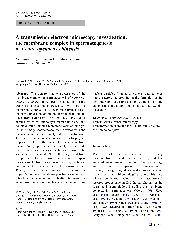摘要
The transforming characteristics of the membrane complex in spermatogenesis of Fenneropenaeus chinensis have been studied by using transmission electron microscopy. Two types of membrane complex have been investigated based on their sources: one originating from nucleus and the other from cytoplasm. The first one, consisted of annular structures, monolayer membrane blebs, and double or multi-lamellar membrane vesicles, emerges in the primary spermatocyte, then diffuses with the nuclear membrane and finally enters the cytoplasm. This type of membrane complex seems to play an important role in the materials transfusion from nucleus to cytoplasm, and it mainly exists inside the primary spermatocyte with some inside the secondary spermatocyte. The latter, originated from cytoplasm, is formed during the anaphase of spermiogenesis. It also exists in mature sperm, locating at both sides of the nucleus under the acrosomal cap. This type of membrane complex mainly comprises rings of convoluted membrane pouches, together with mitochondria, annular lamina bodies, fragments of endoplasmic reticulum, nuclear membrane and some nuclear particles. It releases vesicles and particles into the acrosomal area during the formation of the perforatorium, suggesting a combined function of the endoplasmic reticulum, mitochondria and Golgi's mechanism.
- 出版日期2008-2
- 单位河北大学
